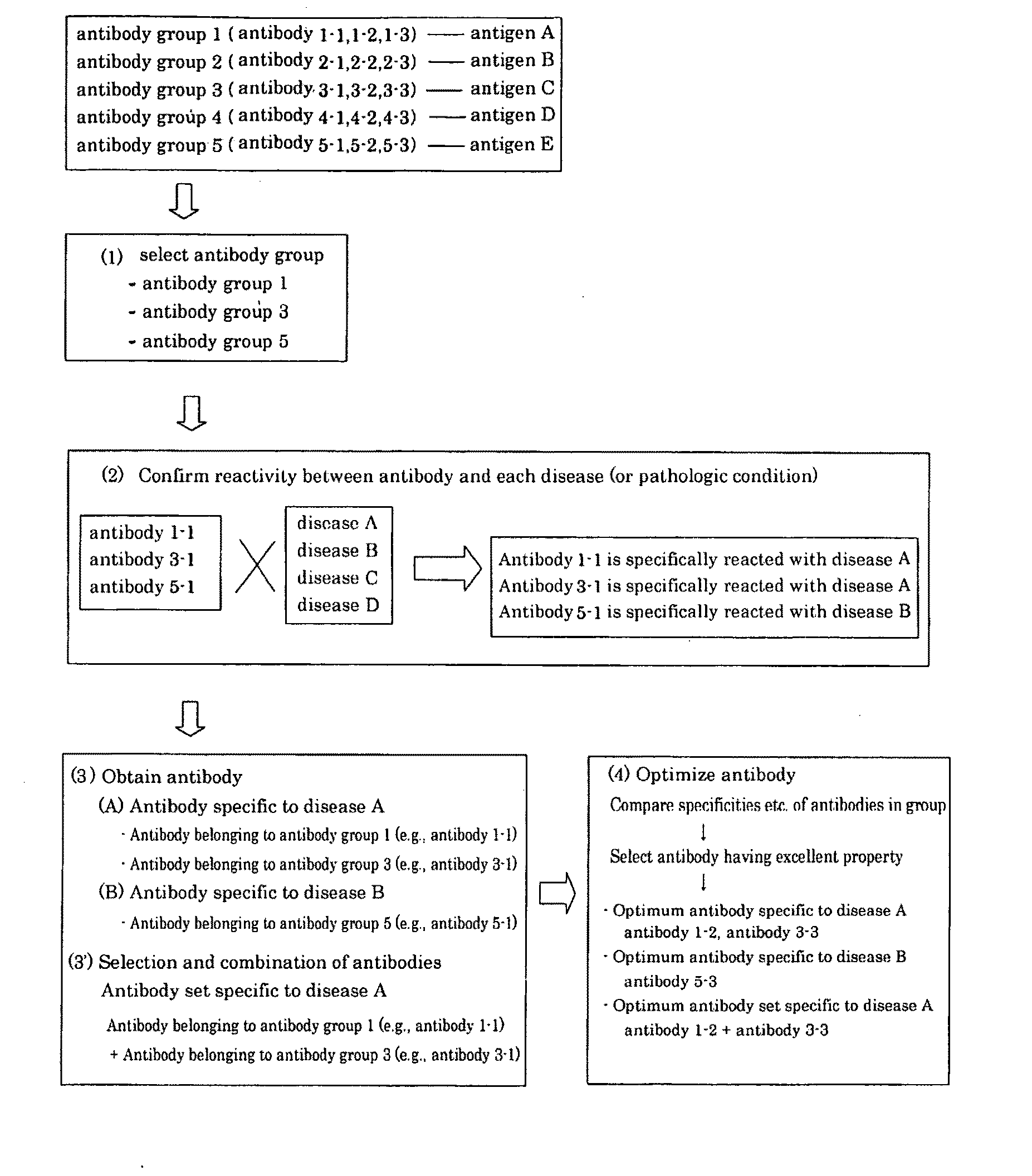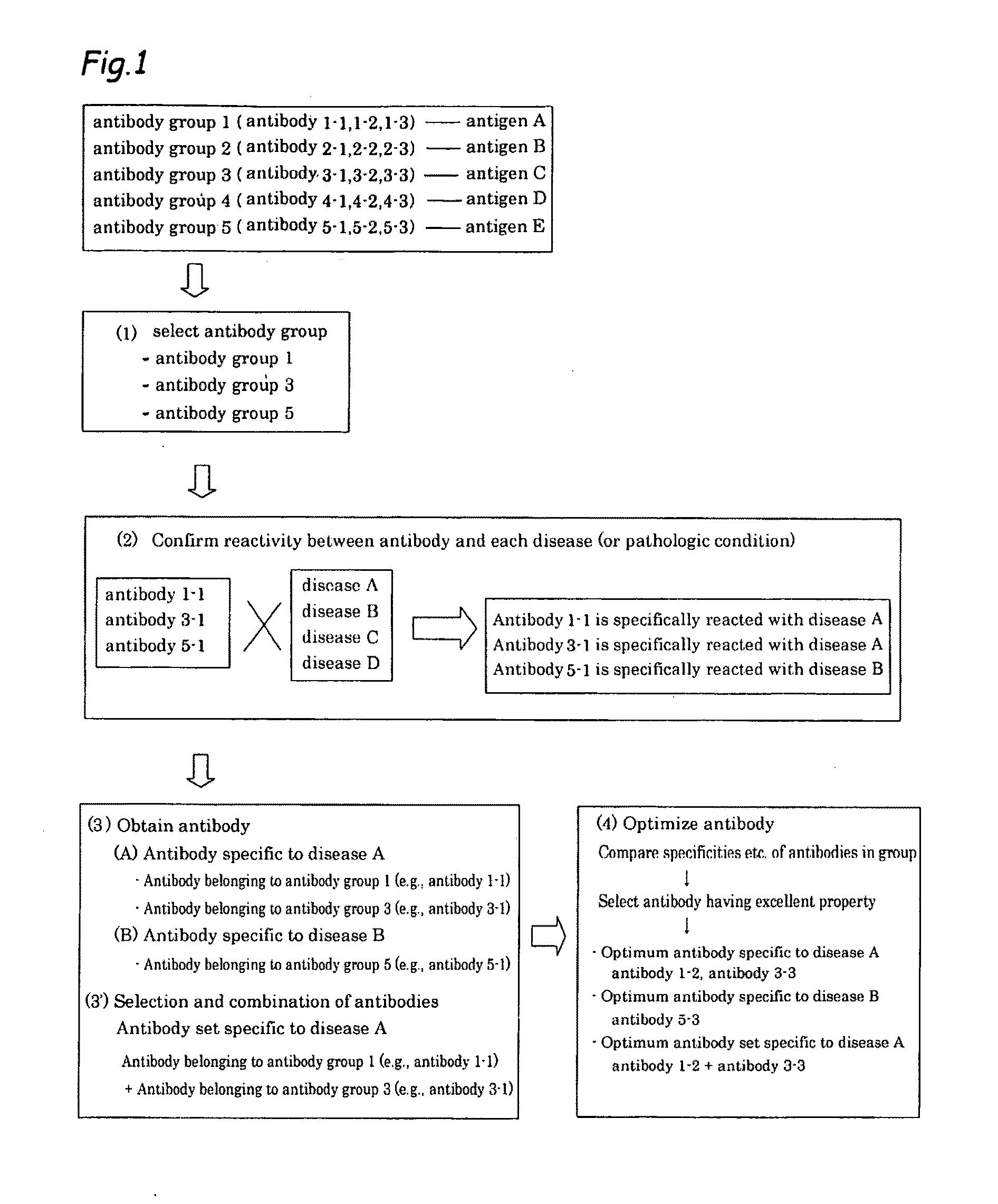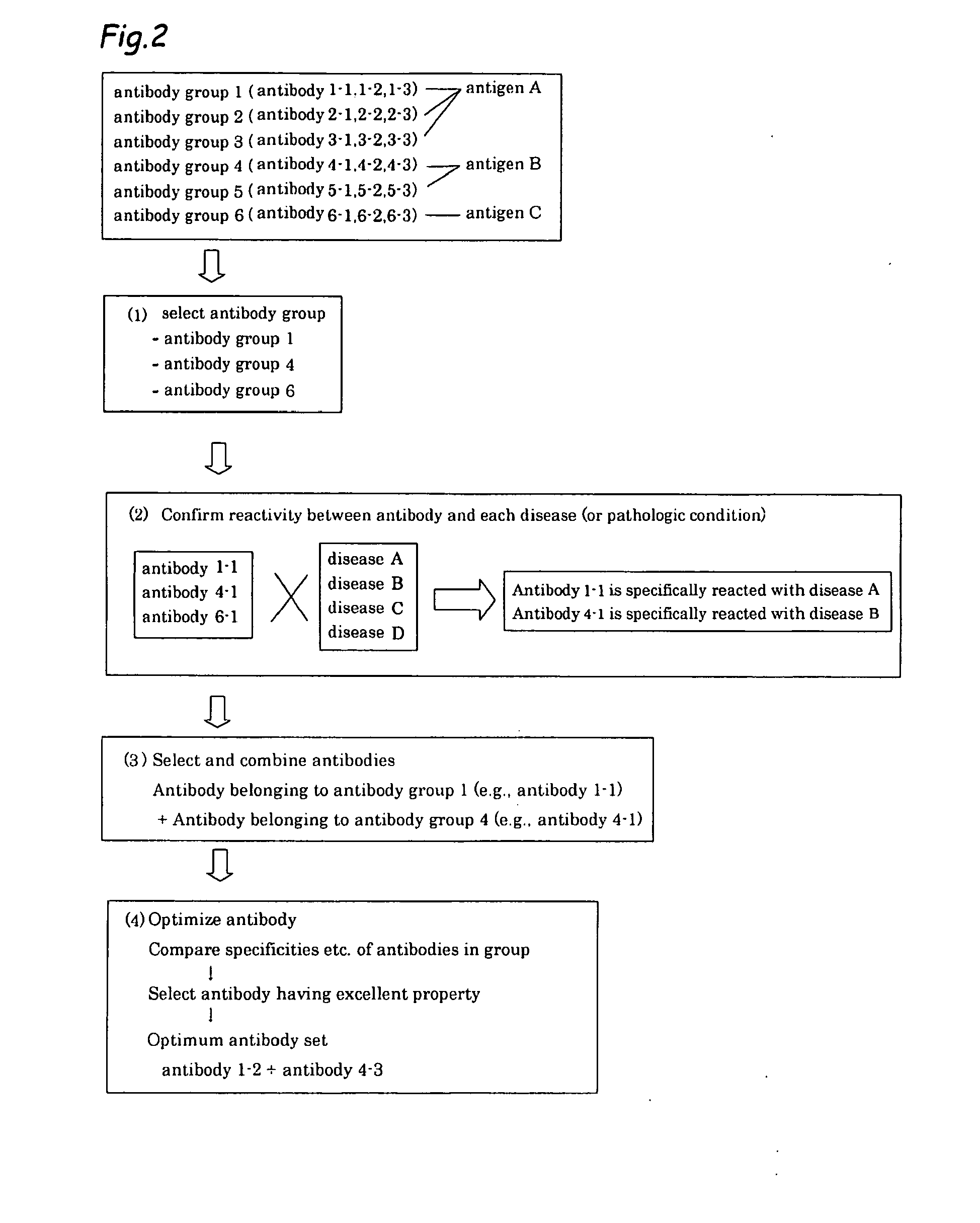Method of classifying antibody, method of identifying antigen, method of obtaining antibody or antibody set, method of constructing antibody panel and antibody or antibody set and use of the same
a technology of antibody and antibody set, which is applied in the field of classifying antibodies, can solve the problems of taking a lot of labor and time and considerably high cost to individually identify an antigen for comprehensively obtained antibodies, and achieves the effect of high cost and high labor and tim
- Summary
- Abstract
- Description
- Claims
- Application Information
AI Technical Summary
Benefits of technology
Problems solved by technology
Method used
Image
Examples
example
1. Production of Vector for Producing ScFv Antibody Gene Library
[0727]1-1 Production of Vector for Producing scFV Antibody Gene Library
[0728]As conceptually shown in FIG. 5, pelB (signal sequence) of M13 phage, His6 tag sequence, cp3 protein of M13 phage (Δcp3 (198aa-406aa) N-terminal deleted capsid protein 3) sequence, protein A protein sequence were incorporated in an appropriate restriction enzyme site of a pTZ19R phagemid vector (Pharmacia) so as to from a vector pAALFab (see Iba Y. et al., Gene 194: 35-46, 1997.). A vector pFCAH9-E8d for incorporation was produced from this pAALFab.
[0729]Genes of a heavy chain and a light chain are inserted into the predetermined position of this vector, thereby completing an actual antibody protein expression vector. The shape of the antibody expressed by the completed vector is a scFv and a light chain constant region CL gene is bonded to the aforementioned cp3 gene. As a result, expression protein has a shape of scFv-CL-cp3. Specifically, th...
PUM
| Property | Measurement | Unit |
|---|---|---|
| molecule weight | aaaaa | aaaaa |
| molecular weight | aaaaa | aaaaa |
| molecular weight | aaaaa | aaaaa |
Abstract
Description
Claims
Application Information
 Login to View More
Login to View More - R&D
- Intellectual Property
- Life Sciences
- Materials
- Tech Scout
- Unparalleled Data Quality
- Higher Quality Content
- 60% Fewer Hallucinations
Browse by: Latest US Patents, China's latest patents, Technical Efficacy Thesaurus, Application Domain, Technology Topic, Popular Technical Reports.
© 2025 PatSnap. All rights reserved.Legal|Privacy policy|Modern Slavery Act Transparency Statement|Sitemap|About US| Contact US: help@patsnap.com



